|
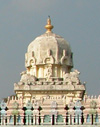 |
The
Ekambareswara Temple
Kanchipuram, Tamil Nadu |
 |
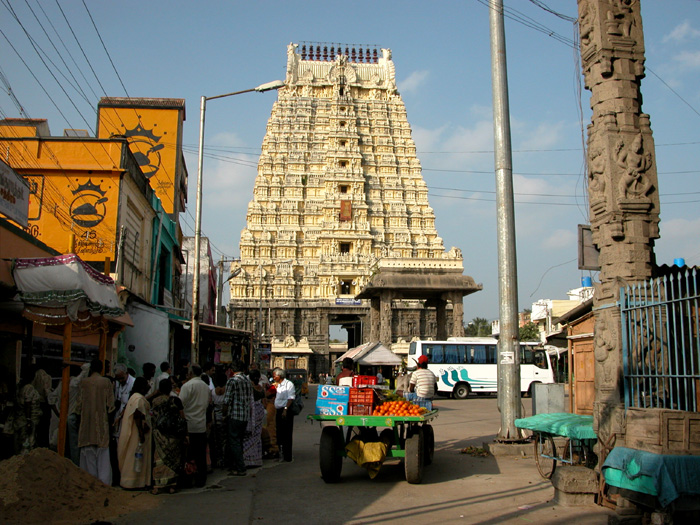
The Ekambaranathar Temples 59m high Raja Gopuram
|
Prudhvi
- Earth
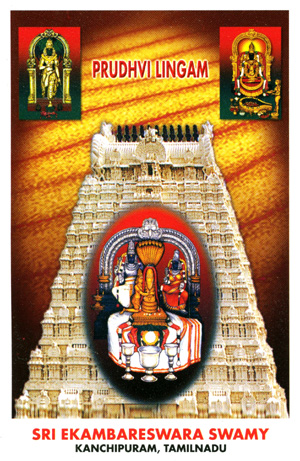
In the Ekambareswara Swamy Temple
Lord Shiva takes the form of
Prudhvi - earth
- one of the five elements, everything in nature
comprises of
according to Hindu philosophy.
Legend says that Kamakshi,
as part of her penance for disturbing Shiva's meditation, created
the Linga in the temple with earth taken from under a Mango tree.
Legends are many, for
other legends and general information see:
http://en.wikipedia.org/wiki/Ekambareswarar_Temple |
|
|
The Gopuram
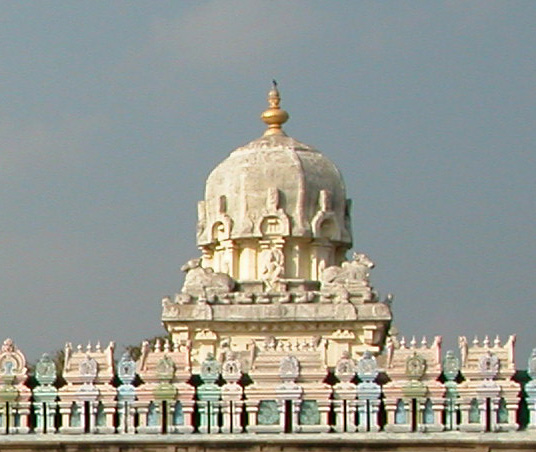
The Gopuram over the main shrine with the earth Lingam
|
|
|
The Five elemental
Shiva Temples
in South-East India |
Abroad
it is less known to the public that 5 magnificent Shiva temples
dedicated to the 5 natural elements:
ether (Akasha), air (Vayu), fire (Thejo), water (Jala) & earth (Pridhvi),
is situated in the eastern part of South India:
The southernmost temple in Tiruvannaikaival, near
Tiruchirapalli is apx. 350 km from Chennai, the capital of Tamil
Nadu. From south going north the other Panch Bhoota Sthalams can be
found in: Chidambaram, Tiruvannamalai, Kanchipuram and barely 100km north-west of Chennai
in Andhra Pradesh the Sri Kalahasti
Temple is situated.
The
five
natural elements - the "Pancha Bhootas"
is a central and most important concept in Indian philosophy and
tradition.
In Hindu faith it is beleived that these five essential elements
created man and the universe.
Lord Shiva, one of the
three main Gods in the Hindu Trinity of Brahma, Vishnu and Shiva, is
represented in these temples as the embodiment of these five elements.
|
In the Ekambareswara Temple the Shiva Linga is made of earth.
In
Jambukeswara Temple Lord Shiva takes the form of water and the Linga
here is immersed in water.
In the Arunachaleswara Temple Shiva takes
form as fire.
In the Kaahateeswara Temple Shiva is representing wind or air.
Last, but not least in the Nataraja Temple Lord Shiva takes the form
of ether, the most sacred of the five elements. |
The Vedic rituals
performed in the numerous Hindu temples all over India has been
worshipping the Gods using the natural elements in every ritual
performed since time immemorial.
Acess for foreigners
These days it is difficult to
enter into the Sanctum Sanctorum to see the Shiva Lingam and thereby get the darshan of Lord Shiva. The
atmosphere in these magnificent temples is soothing to the heart and
just visiting the temple compound itself is a divine experience.
No photos exists of the Shiva idols inside, only
paintings are allowed. |
|
The 5 Shiva
temples are as follows: |
Sri Ekambeswara Swamy Temple,
Kanchipuram, Tamil Nadu - representing the earth element
Sri Jambukareswara Swamy Temple,
Thiruvanaikaival, Tamil Nadu - representing the water element
Sri Arunachaleswara Swamy Temple,
Thiruvannamalai, Tamil Nadu - representing the fire element
Sri Kalahasteeswara Swamy Temple,
Sri Kalahasti, Tamil Nadu - representing the air/wind element
Sri Nataraja Swamy_Temple,
Chidambaram, Tamil Nadu - representing the ether (Akasha) element |
|
The
Ekambareswara
Temple |
|
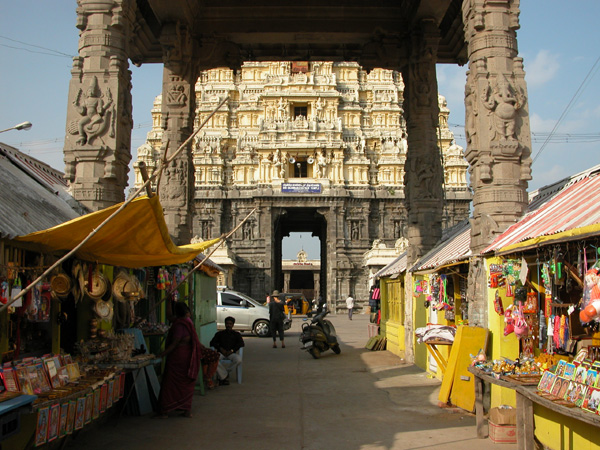
Main entrance
The Ekambareswara or Ekambaranathar Temple in Car Street is, by
covering 12 hectars, one of the largest temples in Kanchipuram. The
construction of the temple was originally started by the Pallavas.
The 16 pillared Mandapa in front of the temple was constructed by
the Vijanagar kings. Its 59m high Gopuram and the massive outher
stonewall were constructed in 1509 by Krishnadavaraya of the
Vijayanagar empire, with later Chola extensions.
|
|
A walk in the
temle compound |
|
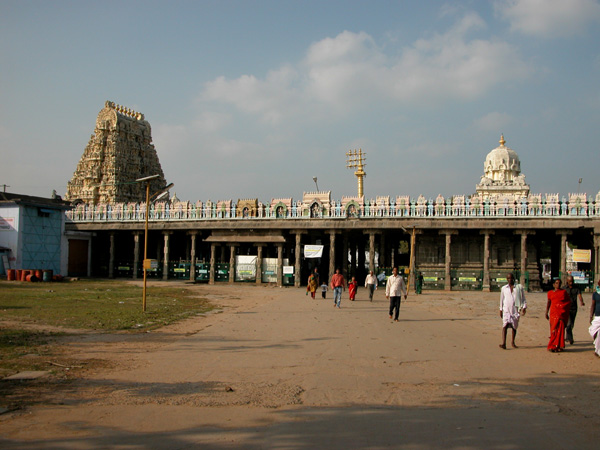
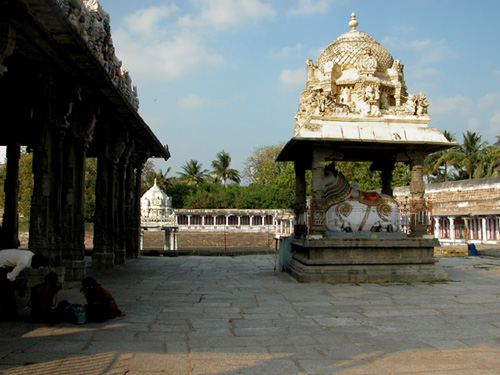
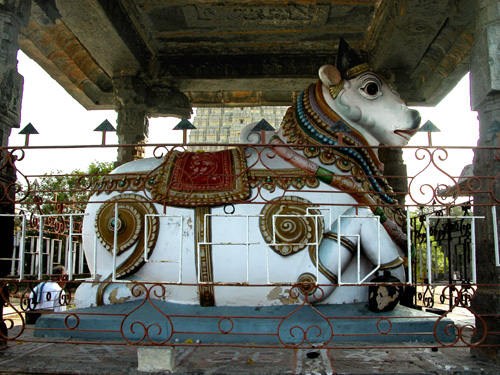
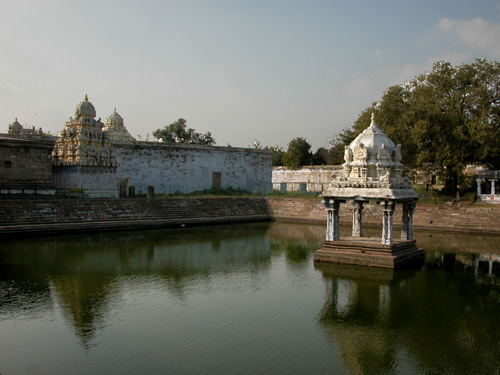
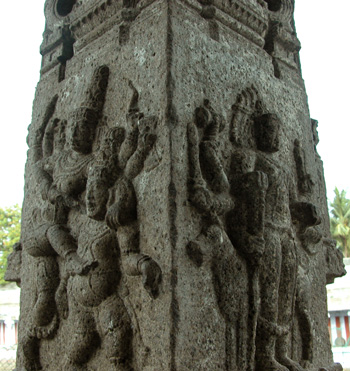
|

|
The
ancient Mango tree |
|
Legend says that Kamakshi,
as part of her penance for disturbing Shiva's meditation, created
the Linga in the temple with earth taken from under a Mango tree.
The name of the temple is said to derive from Eka Amra Nathar
- "Lord of the Mango Tree".
On the western side of the shrine stands the trunk of an old
Mango tree, claimed to be 3500 years old.
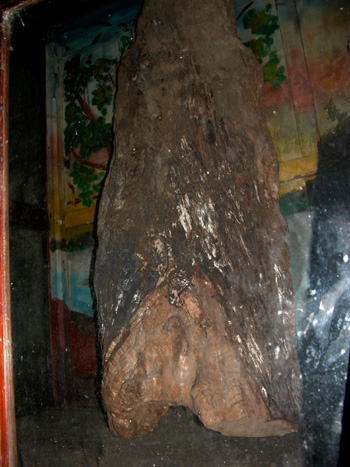
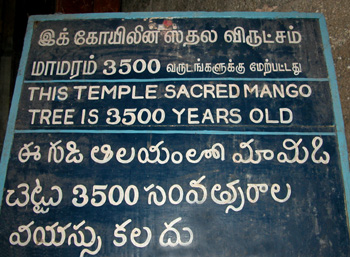
|
|
"Under the Mango
tree" |
|
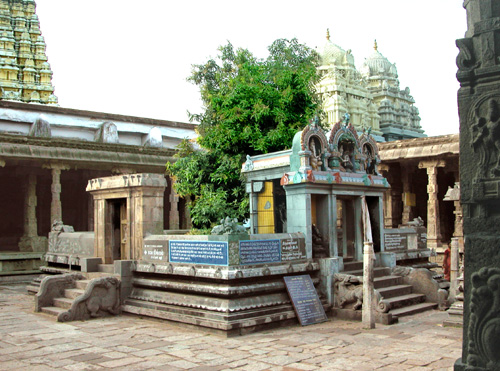
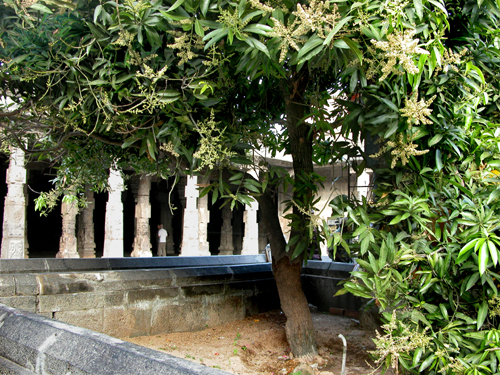
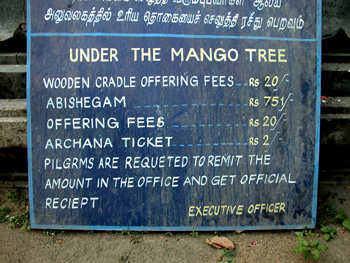
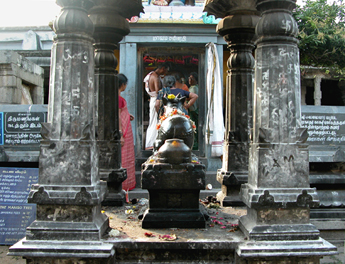
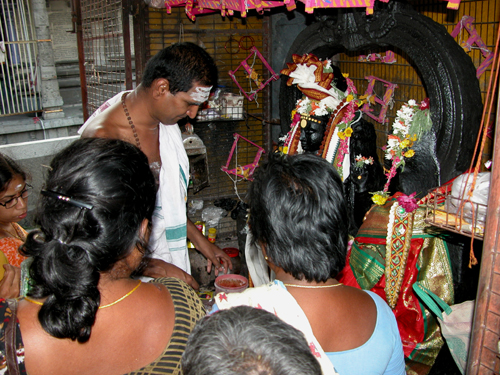
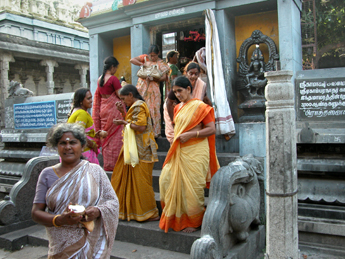
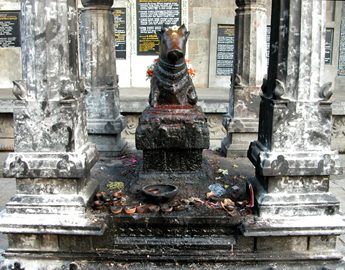 |
|
Procession Idols |
|
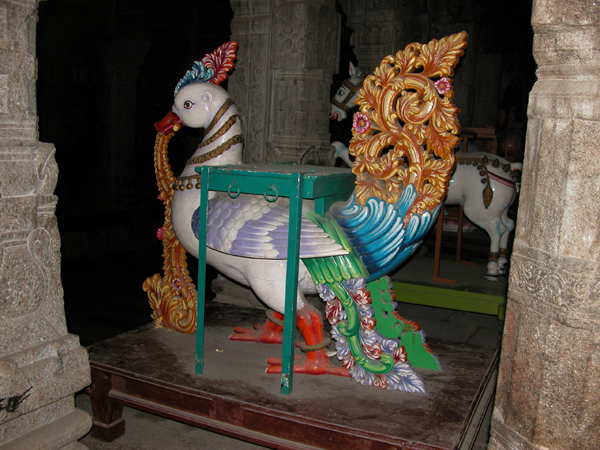
From a sweet dove ...
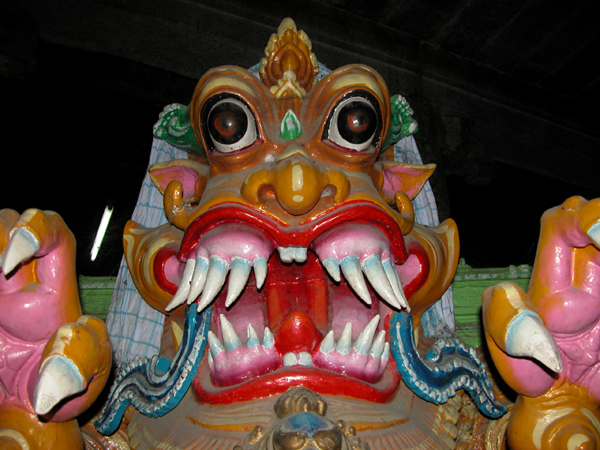
... to a fierce looking monster
|
|
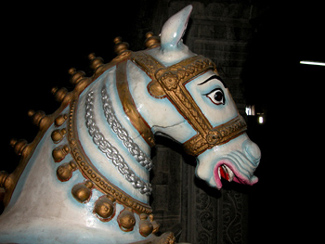 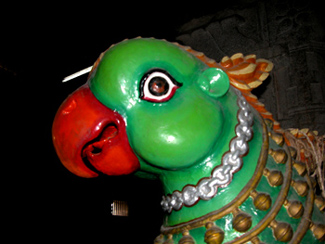
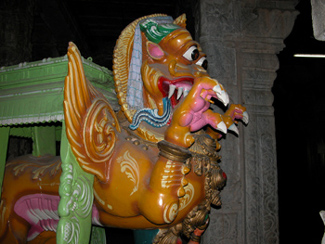 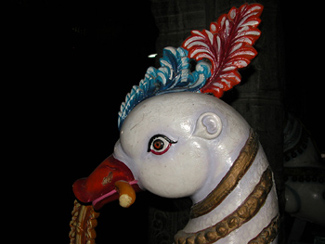
Wonderful and imaginative portraits on the procession carts
encompasses
different human traits to contemplate when used on major
festival days
In the temple corridors you find many items used for rituals and
temple worship. The Ekambaranathar Temple has a large collection of
procession charriots which are used on major holidays to amuse and raise the
spirit of the public. |
|
Rahotsavams -
procession chariots |
|
Apart from the small
chariont, which are used in the tempel compounds and in the streets,
also large chariots are pulled around in the city on holidays and it
takes a lot of people, usually men to pull these heavy chariots on
huge wooden wheels.
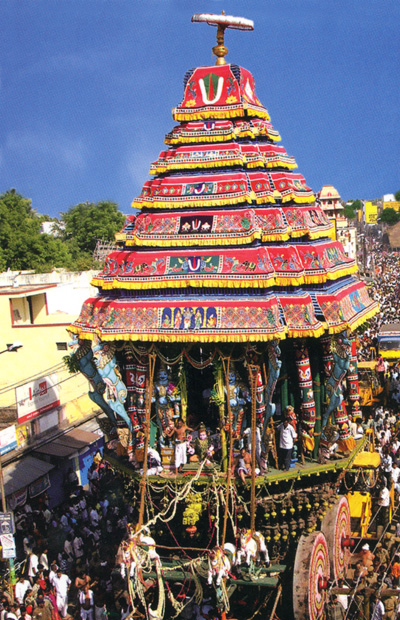
Rahotsavam,
huge procession chariot
in the streets of Kanchipuram
See more photos:
Rahotsavam on this website |
|
mukti4u2@gmail.com |
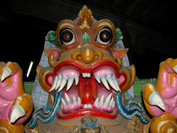 |
www.mukti4u2.dk |
mukti4u2.dk
►
created by
BP |